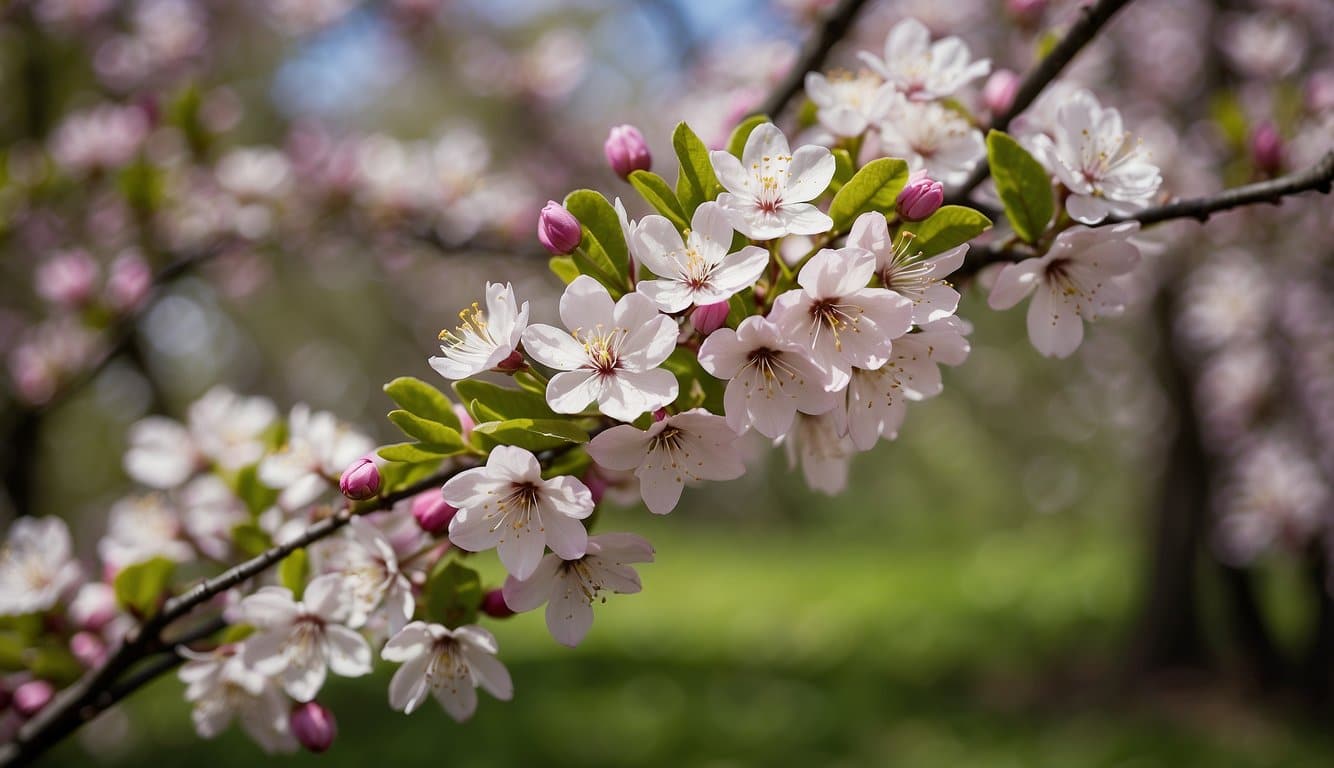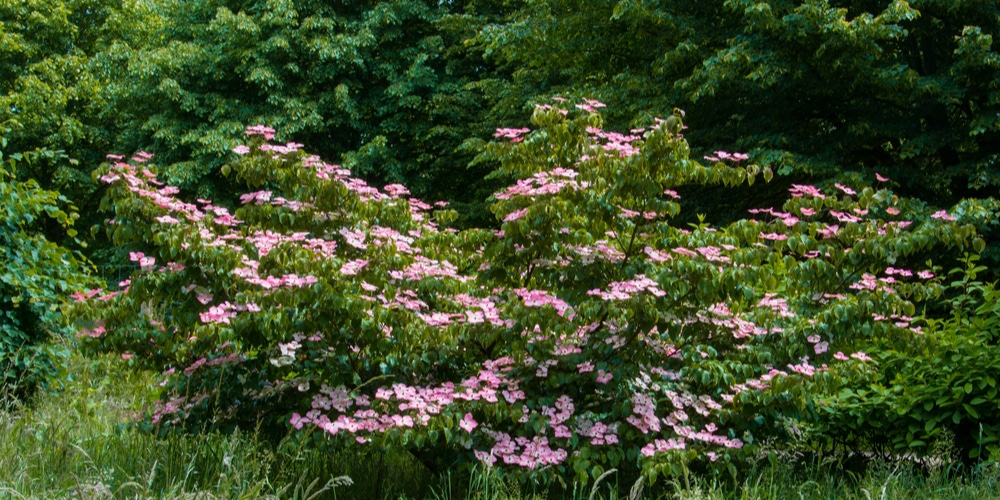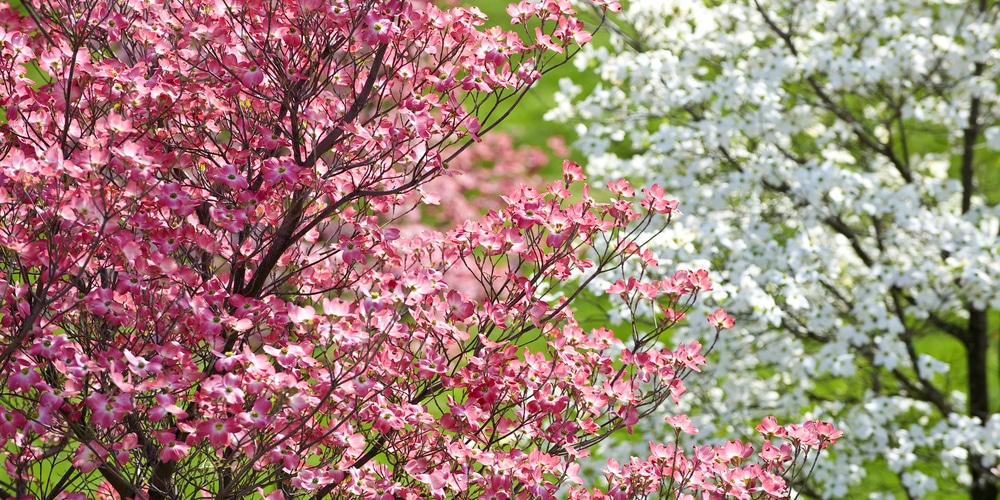Spring Flowering Trees
Spring flowering trees are a vibrant addition to any garden, offering a blossoming spectacle that heralds the arrival of warmer weather.
Their colorful blooms are not only a visual delight but also provide early nectar for pollinators.
Spring Flowering Trees: 101
- Bloom Timing: These trees are known for their early bloom, often before they fully leaf out.
- Typically, they come to life with blossoms in various hues at the first hints of spring.
- Growth Habits: They can range widely in size and shape, from small, understory species to larger specimens that can dominate a landscape.
- Site Requirements: Most require well-drained soil and a site with adequate sunlight, although some can tolerate partial shade.
- Hardiness: They’re often adapted to a wide range of hardiness zones, with many varieties being cold-tolerant.
Popular Varieties of Spring Flowering Trees
- Flowering Crab Apples: Valued for their vibrant blooms and versatile sizes. Harvest to Table shows that these trees are harbingers of spring.
- Dogwoods: With their recognizable bracts surrounding small flowers, these trees are fixtures in many spring landscapes.
- Redbuds: Known for their heart-shaped leaves and pink to purple flowers that envelop branches.
- Cherry Trees: Often associated with spring, varieties like Prunus serrulata ‘Amanogawa’ offer light pink blooms and are suitable for small gardens, as noted by Dennis’ 7 Dees.
- Hawthorns: These trees feature white or pink flowers and can also bear fruit attracting wildlife.
Care for these trees involves proper planting, watering, mulching, and occasional pruning to maintain shape and health.
Regular monitoring for pests and diseases can ensure longevity and vibrancy in your garden.
Selection of Spring Flowering Trees
Selecting the right spring flowering trees for your garden involves careful consideration of your specific landscape conditions and climate. This ensures that the trees you plant will thrive and bring years of beauty to your space.
Asses Your Landscape Conditions
- Soil Type: Before you choose your tree, have your soil tested.
- Different species have varying soil preferences—some thrive in sandy soil, while others require clay or loam.
- Sunlight: The amount of sun exposure is crucial.
- Full sun areas receive more than six hours of direct sunlight per day, whereas partial shade areas get about three to six hours. This will dictate which trees are suitable for your garden.
- Space: Consider the mature size of the tree, both in height and spread.
- Ensure there is enough room for the tree to grow without interfering with buildings, power lines, or other structures.
Choose the Right Species for Your Area
- Hardiness Zone: Trees have specific climate tolerances known as hardiness zones.
- Cross-reference your region’s hardiness zone with the requirements of the tree to guarantee its survival through your local winter temperatures.
- Local Pests and Diseases: Some trees are more resistant to local pests and diseases.
- Choosing a resistant species can save you time and effort in maintenance.
- Bloom Time and Duration: Different trees bloom at various times throughout the spring.
- Select species that will stagger the flowering time in your garden to enjoy continuous blooms.
Planting Spring Flowering Trees
When introducing spring flowering trees to your garden, proper timing and soil preparation are crucial steps that ensure the best start for your new plants.
Best Time to Plant
The ideal time frame for planting your spring flowering trees is early in the spring or during the early fall. This allows the trees to establish roots before the stress of extreme weather conditions, such as the summer heat or winter cold.
- Spring Planting: Aim for the period after the last frost when the soil is workable.
- Fall Planting: Schedule planting at least six weeks before the first expected frost.
Soil Preparation and Planting Techniques
Before you plant a tree, it’s essential to prepare the site to promote healthy growth.
- Test Soil: Begin by assessing the pH level and nutrient profile of your soil to ensure it’s suitable for the type of tree you’re planting.
- Site Selection: Choose a location where the tree will receive adequate sunlight. Most flowering trees need direct sunlight to thrive.
- Digging the Hole: The hole should be twice as wide and the same depth as the root ball.
- Backfilling:
- Place the tree in the center of the hole.
- Partially backfill with native soil mixed with compost to aid in nutrient provision.
- Water deeply to settle the soil around the roots and eliminate air pockets.
- Complete backfilling and create a water basin around the base of the tree.
Consistent watering during the first year is essential, as is mulching to retain moisture and regulate soil temperature.
Remember to avoid placing any mulch material directly against the tree’s trunk.
Maintenance and Care
Proper maintenance is crucial for the health and beauty of your spring flowering trees.
Focusing on watering, mulching, pruning, and disease management practices will ensure vibrant blossoms and robust growth.
Watering and Mulching
- Watering: Your flowering trees need consistent moisture, especially during their growth season and after planting.
- Newly planted trees require watering twice a week, while established trees benefit from a deep water every couple of weeks.
- Avoid waterlogging by ensuring the soil is well-draining.
- Mulching: Mulch plays an integral role in retaining soil moisture and regulating temperature.
- Apply a 2-3 inch layer of organic mulch around the base of the tree, taking care to avoid direct contact with the trunk to prevent rot.
- Replace mulch annually to maintain its benefits.
Pruning and Disease Management
- Pruning: Pruning is essential for removing dead or diseased branches and encouraging healthy growth.
- Conduct pruning in late winter or early spring before new growth starts.
- Remove only the necessary branches to maintain the tree’s shape and improve air circulation.
- Disease Management: Regular monitoring can help catch and manage diseases early.
- Inspect your flowering trees regularly for signs of pests or disease.
- Consult with a local extension service or professional arborist for appropriate treatment options.
Seasonal Considerations
When caring for spring flowering trees, you need to be mindful of the changing seasons and how they impact your tree’s growth and health.
From winter protection to preparing for dormancy and ensuring year-round beauty, each season demands specific care.
Winter Protection
During the colder months, your spring flowering trees require protection to survive the harsh conditions:
- Mulching: Apply a thick layer of mulch around the base of the tree to insulate the roots from extreme temperatures.
- Wrapping: For younger trees, wrap the trunk with a tree wrap to prevent frost damage and cracks.
Prepping for Dormancy
As fall approaches, trees prepare for dormancy. Your role is to help them conserve energy for spring:
- Pruning: Remove any dead, diseased, or crossing branches in late fall to promote healthy growth.
- Watering: Ensure trees receive adequate moisture before the ground freezes so they stay hydrated through winter.
Year-Round Aesthetic Value
To maintain the aesthetic appeal of your flowering trees throughout the year:
- Plant Selection: Choose tree species with features that stand out in every season, such as interesting bark or fall foliage.
- Fertilizing: Use a balanced fertilizer to ensure trees have the necessary nutrients to flower beautifully and maintain their leaves and overall structure throughout the year.
Frequently Asked Questions
Navigating the care of spring flowering trees can be straightforward when you follow specific guidelines and recommendations.
These FAQs address common concerns to help your trees flourish.
What are the best practices for pruning spring flowering trees?
- Prune to shape young trees, but limit pruning of mature trees to removing dead or damaged branches.
- Pruning should occur just after blooms fade to ensure you don’t cut off next year’s buds.
Which types of flowering trees thrive in USDA zones 6 and 7?
Flowering trees well-adapted to USDA zones 6 and 7 include:
- Dogwoods
- Eastern Redbuds
- Some varieties of flowering cherries
How do you properly care for a magnolia tree in the spring season?
For magnolia trees in spring:
- Ensure they’re well-watered, especially if the season is dry.
- Apply mulch to conserve moisture and regulate soil temperature.
What fertilizers are recommended for spring flowering trees to encourage blooming?
Use fertilizers with higher phosphorous content, as phosphorous is key to encouraging bloom.
- Apply a balanced, slow-release fertilizer as new growth appears.
- Optionally, use a root-promoting fertilizer to support root development for newly planted trees.
What are some fast-growing flowering tree options for landscaping purposes?
Fast-growing flowering trees great for landscaping:
- Crape Myrtles
- Tulip Poplars
- Certain species of Cherry Trees
Which tree species are known to bloom first during the springtime?
Species like:
- Forsythia
- Witch Hazel
- Certain early-blooming magnolias
Are among the first to bloom, signaling the start of spring.


